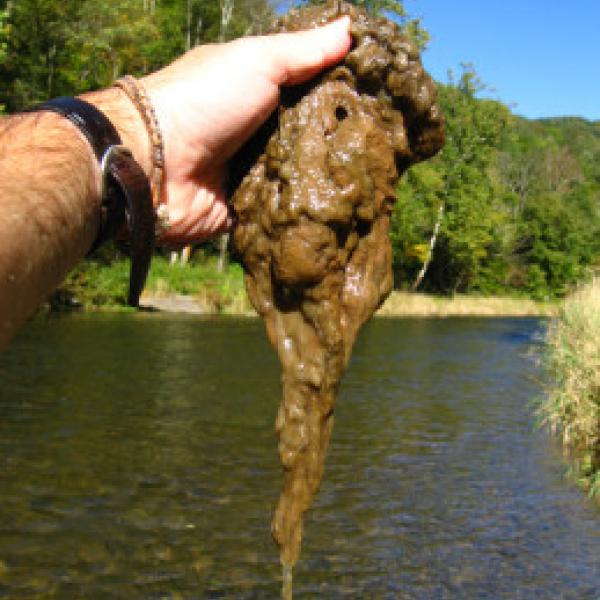
In the mid-2000s, a brown, slimy organism began showing up in some of Vermont’s high-quality trout streams. First in the Batten Kill River in 2006, and later in the White River and Mad River, among others. It appeared that Didymosphenia geminata (Didymo, or “rock snot”) had gained a foothold in the state, and was slowly spreading across Vermont. There were fears that the carpet-like mats formed by the diatom would eventually extend to all Vermont rivers and streams if nothing was done to curb its spread.
When Didymo first appeared in Vermont, scientific literature suggested that fishermen and their equipment were responsible for new occurrences of the species, as was discussed in a previous post on Flow. Felt-soled wading boots received the most blame due to the belief that felt could easily trap and transport small organisms, and that it was more difficult to dry and clean than other materials. By 2011, the Vermont Agency of Natural Resources decided that action was necessary, and urged the Vermont legislature to ban the use of felt-soled wading boots. The bill passed, and the use of those boots has been illegal in Vermont since April 1, 2011.
A lot can change in five years. Although it was initially feared that Didymo was brought to the Northeast unknowingly by humans, recent research on the topic refutes that claim. It is now believed that Didymo has been in the Northeast all along, and that recent environmental conditions have caused the species to form nuisance blooms. It appears that the felt-soled wading boot may have been framed for a crime it didn’t commit.
As a reaction to the changing science, the Vermont Agency of Natural Resources supported a repeal of the ban on felt-soled wading boots in the 2016 legislative session. It was the Agency’s stance that the concerns over personal safety from anglers and other water users now outweighed the risk of transportation of a species now deemed to be native. The bill passed, and the use of felt-soled footwear will again be allowed in the state beginning on July 1st, 2016.
Remember, aquatic invasive species can be transported on any gear or equipment that comes in contact with water, such as fishing nets, life jackets, and wading boots (felt-soled, rubber-soled, or otherwise). While Didymo may not be considered the threat that it was five years ago, there are plenty of other species that threaten Vermont waters. Please take time to clean, drain, and dry ALL gear and equipment before moving from one waterbody to the next.
Article Credit: Josh Mulhollem